(p. A14) ARSI NEGELE, Ethiopia — Babou Galgo, a 61-year-old farmer, proudly showed off his prized harvest from last season: two shiny gold medals from the regional and federal government and a slick certificate praising his “outstanding performance in increasing agriculture production and productivity.”
What he had done was boost his corn yields on his small farm in southern Ethiopia an eye-popping sevenfold over the past several years. Even more impressive, he had boosted the well-being of his family as well: With the added income, they moved out of a traditional mud-brick tukul and into a brick and concrete house furnished with a refrigerator, television and DVD player, rare luxuries for a farmer in one of the world’s poorest countries.
Indeed, not long ago, Mr. Galgo would have had no need for a refrigerator as meager yields had him struggling to feed his family. “It’s the seeds,” he says, noting the reason for his reversal of fortunes. “Hybrids.”
Africa’s nascent push to finally feed itself is turning the clock back to the early part of 20th-century America. It was in the 1930s and ’40s when Iowa-based Pioneer Hi-Bred International popularized hybrid seeds in the U.S., swelling corn yields throughout the Midwest. Seven decades later, African farmers and U.S. companies are trying to recreate the same boom that turned America into the world’s breadbasket, only this time in the harsh climate — environmental and political — of Ethiopia and greater Africa.
. . .
Farmer Galgo is ready for another upgrade. Sitting in his comfortable living room, beneath wall murals of Jesus and a peace dove, he tells Mr. Admassu, “I want to expand my land and buy a tractor. A big tractor, with a lot of power.”
For the full story, see:
ROGER THUROW. “Agriculture’s Last Frontier; African Farmers, U.S. Companies Try to Create Another Breadbasket With Hybrids.” The Wall Street Journal (Tues., May 27, 2008): A14.
(Note: ellipsis added.)


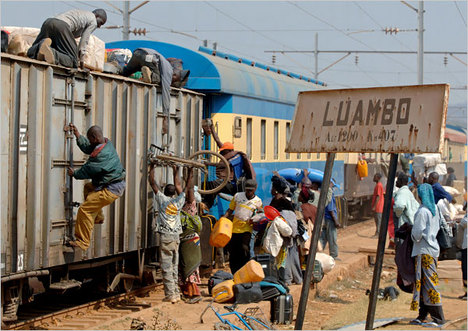
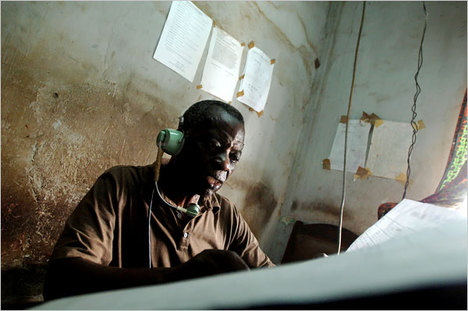


 The photo on the left shows a woman safely drinking bacteria-laden water through a filter. The photo on the right shows a "pot-in-pot cooler" that evaporates water from wet sand between the pots, in order to cool what is in the inner pot. Source of photos: online version of the NYT article quoted and cited above.
The photo on the left shows a woman safely drinking bacteria-laden water through a filter. The photo on the right shows a "pot-in-pot cooler" that evaporates water from wet sand between the pots, in order to cool what is in the inner pot. Source of photos: online version of the NYT article quoted and cited above.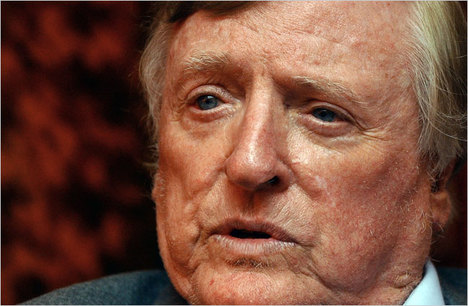
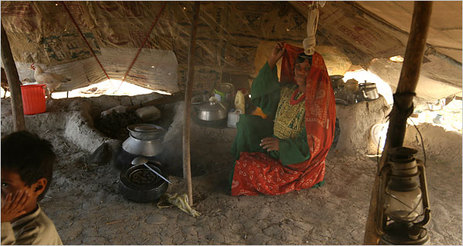
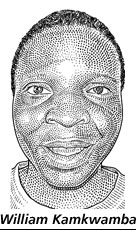 Source of the image: online version of the WSJ article quoted and cited below.
Source of the image: online version of the WSJ article quoted and cited below.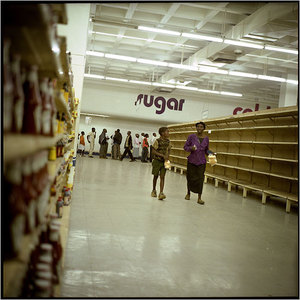
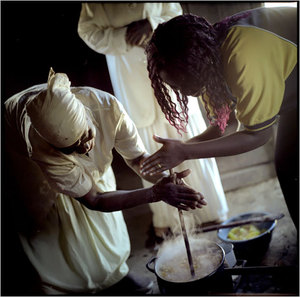
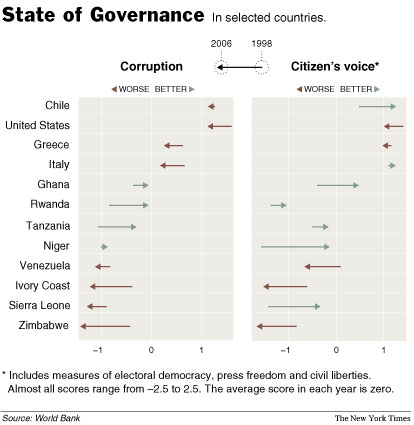 Source of graph: online version of the NYT article quoted and cited below.
Source of graph: online version of the NYT article quoted and cited below.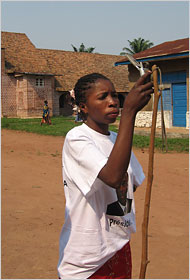 "Micheline Kapinga of Kamponde, Congo, uses a cellphone on the only site in the village that is sometimes able to capture a signal." Source of caption and photo: online version of the NYT article cited below.
"Micheline Kapinga of Kamponde, Congo, uses a cellphone on the only site in the village that is sometimes able to capture a signal." Source of caption and photo: online version of the NYT article cited below.